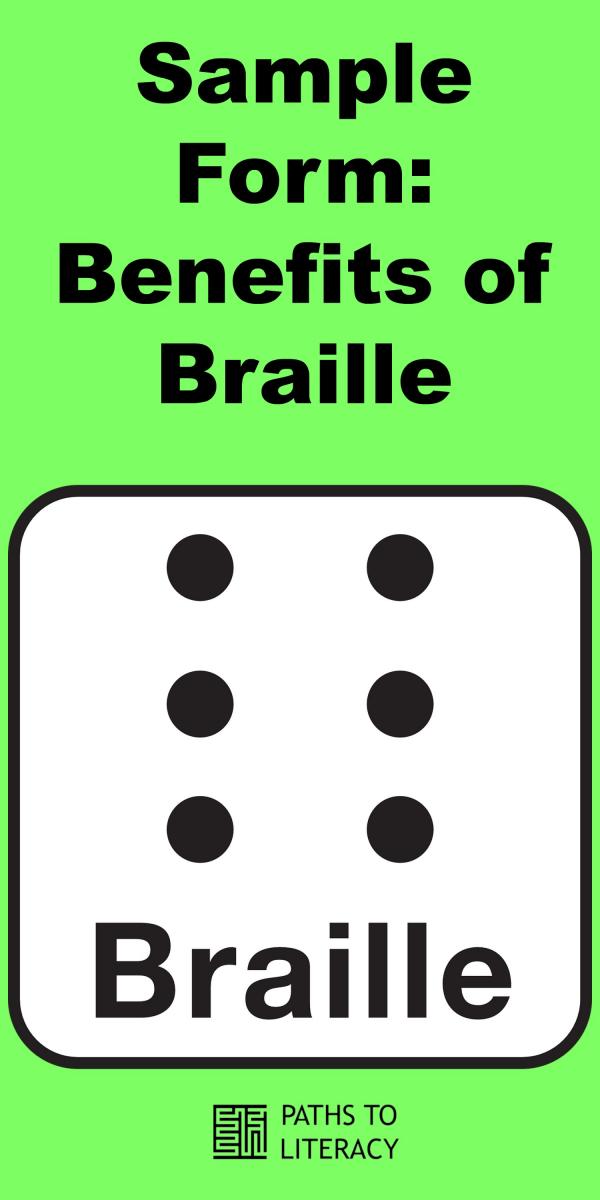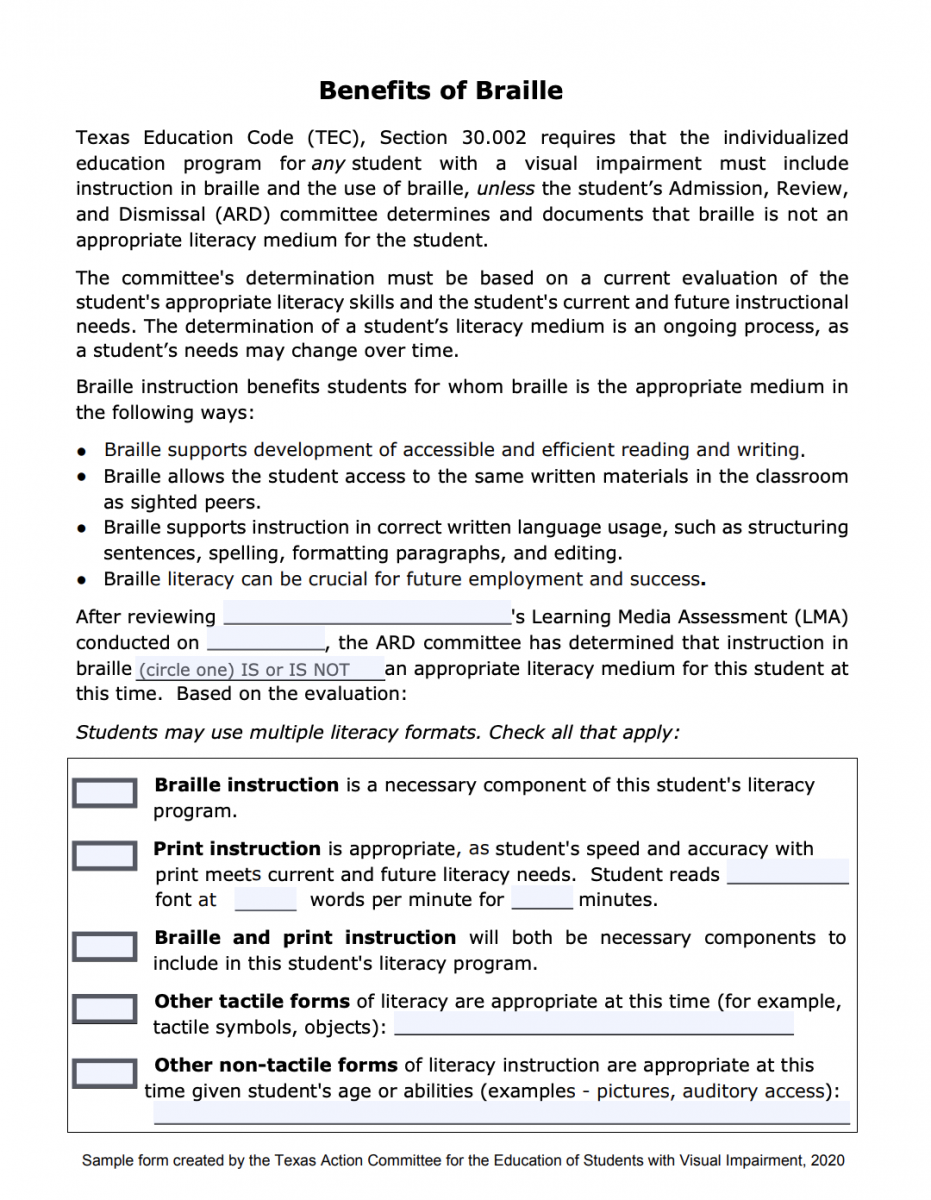Sample Form: Benefits of Braille
This sample form is designed to be given to all students with visual impairment at their annual IEP or ARD meetings.
By Cyral Miller
In the 86th Texas legislative session, Texas Education Code 30.002 was changed to delete reference to the term “functionally blind”. As a result, information about the benefits of braille now should be given to all Texas students with visual impairment at each annual ARD. (This is also known as an IEP meeting in other parts of the country.) The Texas Action Committee for the Education of Students with Visual Impairments created an updated sample form to accomplish this. It is a PDF with fillable boxes should you choose to use it electronically, or it can be printed out and shared. This PDF is only a sample because the law does not specify how the information about braille should be conveyed; individual districts can modify this sample or create their own process.
Text of Benefits of Braille Form
Texas Education Code (TEC), Section 30.002 requires that the individualized education program for any student with a visual impairment must include instruction in braille and the use of braille, unless the student’s Admission, Review, and Dismissal (ARD) committee determines and documents that braille is not an appropriate literacy medium for the student.
The committee’s determination must be based on a current evaluation of the student’s appropriate literacy skills and the student’s current and future instructional needs. The determination of a student’s literacy medium is an ongoing process, as a student’s needs may change over time.
Braille instruction benefits students for whom braille is the appropriate medium in the following ways:
- Braille supports development of accessible and efficient reading and writing.
- Braille allows the student access to the same written materials in the classroom as sighted peers.
- Braille supports instruction in correct written language usage, such as structuring sentences, spelling, formatting paragraphs, and editing.
- Braille literacy can be crucial for future employment and success.
After reviewing __________________’s Learning Media Assessment (LMA) conducted on _____________, the ARD committee has determined that instruction in braille (circle one) IS or IS NOT an appropriate literacy medium for this student at this time. Based on the evaluation:
Students may use multiple literacy formats. Check all that apply:
__ Braille instruction is a necessary component of this student’s literacy program.
__ Print instruction is appropriate, as student’s speed and accuracy with print meets current and future literacy needs. Student reads ___font at ___words per minute for ___ minutes.
__ Braille and print instruction will both be necessary components to include in this student’s literacy program.
__ Other tactile forms of literacy are appropriate at this time (for example, tactile symbols, objects): ___________________________________________
__ Other non-tactile forms of literacy instruction are appropriate at this time given student’s age or abilities (examples – pictures, auditory access): ________________________________


